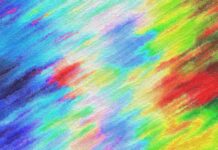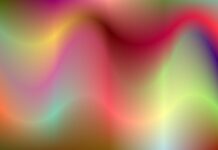Tooli Art is a unique artistic movement that emerged in the late 20th and early 21st centuries, characterized by its fusion of traditional and contemporary art techniques with technology. This innovative approach has garnered attention from artists, collectors, and enthusiasts worldwide. Below, we delve into the essence of Tooli Art, exploring its origins, characteristics, notable artists, and its impact on the art world.
1. Origins of Tooli Art
Tooli Art finds its roots in the convergence of traditional artistic practices and advancements in technology. Emerging in the late 20th century, it was propelled by the widespread availability of digital tools and platforms for artistic expression. Artists began to experiment with incorporating digital elements into their work, blurring the boundaries between traditional art forms and modern technology.
2. Fusion of Traditional and Digital Techniques
At the core of Tooli Art is the seamless integration of traditional artistic techniques with digital tools and technologies. Artists utilize a diverse range of mediums, including painting, sculpture, photography, and digital art, often combining them to create innovative and multifaceted works. This fusion allows for the exploration of new creative possibilities and the breaking of traditional artistic constraints.
3. Exploration of Themes and Concepts
Tooli Art explores a wide array of themes and concepts, ranging from personal narratives to social commentary and technological innovation. Artists often draw inspiration from their experiences, emotions, and observations of the world around them, infusing their work with depth and meaning. Additionally, Tooli Art frequently delves into the intersection of humanity and technology, reflecting the increasingly digitized nature of contemporary society.
4. Utilization of Digital Tools
Central to Tooli Art is the utilization of digital tools and software to enhance and augment artistic expression. Artists employ various digital techniques, such as digital painting, 3D modeling, and multimedia installations, to create immersive and interactive artworks. These tools enable artists to push the boundaries of traditional art forms and explore new mediums of expression.
5. Interactivity and Engagement
One of the defining features of Tooli Art is its emphasis on interactivity and engagement with the audience. Many Tooli artworks incorporate interactive elements, such as augmented reality, virtual reality, and interactive installations, inviting viewers to actively participate in the artistic experience. This interactive approach fosters deeper connections between the artwork and the audience, transforming passive spectators into active participants in the creative process.
6. Notable Artists in Tooli Art
Several artists have made significant contributions to the development and popularization of Tooli Art. Among them are:
a. Sarah Digitalis
Known for her mesmerizing digital paintings and immersive virtual reality installations, Sarah Digitalis is a pioneering figure in the Tooli Art movement. Her work explores themes of identity, consciousness, and the digital realm, inviting viewers to contemplate the nature of reality in an increasingly interconnected world.
b. Max Technica
Max Technica is renowned for his groundbreaking use of technology in sculpture and kinetic art. His creations blur the lines between the physical and virtual worlds, challenging traditional notions of form and space. Through his innovative use of materials and digital fabrication techniques, Technica pushes the boundaries of artistic expression in Tooli Art.
c. Luna Code
Luna Code is a leading figure in the intersection of art and technology, specializing in interactive multimedia installations and generative art. Her work explores the symbiotic relationship between humans and machines, inviting viewers to explore the boundaries of creativity and computation. Code’s innovative use of code and algorithms results in dynamic and ever-evolving artworks that redefine the possibilities of Tooli Art.
7. Impact on the Art World
Tooli Art has had a profound impact on the art world, challenging traditional notions of art and expanding the boundaries of creative expression. Its fusion of traditional and digital techniques has inspired a new generation of artists to explore innovative ways of creating and experiencing art. Additionally, Tooli Art has fostered greater interdisciplinary collaboration between artists, technologists, and scientists, leading to the emergence of new artistic forms and practices.
8. Evolution and Future Directions
As technology continues to advance, Tooli Art is poised to evolve and adapt to new creative possibilities. Artists are increasingly exploring emerging technologies such as artificial intelligence, biotechnology, and immersive media, pushing the boundaries of artistic expression even further. The future of Tooli Art promises to be a dynamic and ever-evolving landscape of creativity and innovation.
9. Accessibility and Democratization
One of the significant impacts of Tooli Art is its role in democratizing artistic expression and making art more accessible to a wider audience. Digital platforms and online communities have enabled artists to share their work with global audiences instantly, bypassing traditional gatekeepers and institutions. This democratization of art has empowered emerging artists to showcase their talent and connect with like-minded individuals from around the world.
10. Cultural and Social Reflections
Tooli Art serves as a reflection of contemporary culture and society, capturing the zeitgeist of the digital age. Artists explore pressing social issues, cultural phenomena, and the human condition through the lens of technology, offering poignant insights into the complexities of modern life. By engaging with these themes in their work, Tooli artists contribute to broader conversations about technology, identity, and the future of humanity.
Tooli Art represents a revolutionary fusion of traditional artistic practices with cutting-edge digital technologies, creating a dynamic and innovative approach to creative expression. At its core, Tooli Art transcends the boundaries of conventional artistic mediums, embracing a diverse range of techniques and tools to produce immersive and engaging artworks. Emerging at the intersection of art and technology, Tooli Art has rapidly gained recognition for its ability to challenge traditional notions of art while pushing the boundaries of creative exploration.
In the realm of Tooli Art, artists harness the power of digital tools and platforms to expand the possibilities of artistic expression. This transformative approach enables artists to explore new mediums, experiment with innovative techniques, and create multidimensional works that defy categorization. From digital painting and sculpture to interactive installations and virtual reality experiences, Tooli Art encompasses a wide spectrum of artistic practices that blur the lines between the physical and virtual worlds. By embracing technology as a tool for creativity, Tooli Art empowers artists to transcend the limitations of traditional art forms and explore new frontiers of imagination and innovation.
Central to the ethos of Tooli Art is the seamless integration of traditional artistic principles with contemporary digital methodologies. Artists draw inspiration from a myriad of sources, ranging from personal experiences and emotions to societal issues and cultural phenomena. Through the lens of technology, Tooli artists reinterpret traditional themes and concepts, infusing them with a sense of modernity and relevance. This synthesis of old and new, analog and digital, results in artworks that resonate on both aesthetic and conceptual levels, inviting viewers to engage with the artwork on multiple levels.
One of the defining features of Tooli Art is its emphasis on interactivity and audience engagement. Many Tooli artworks incorporate interactive elements, such as augmented reality experiences, motion sensors, and participatory installations, which invite viewers to become active participants in the artistic process. By breaking down the barriers between artist and audience, Tooli Art fosters deeper connections and dialogue, transforming the act of viewing art into a collaborative and immersive experience. This interactive approach not only enriches the viewer’s engagement with the artwork but also expands the possibilities of artistic expression in the digital age.
In addition to its innovative use of technology, Tooli Art often explores themes related to the intersection of humanity and technology. Artists delve into questions of identity, consciousness, and the impact of technology on society, offering critical insights into the complexities of modern existence. Through their work, Tooli artists confront the ethical, social, and philosophical implications of technological advancement, prompting viewers to reflect on their own relationship with technology and its role in shaping the future of humanity. By grappling with these existential questions, Tooli Art serves as a catalyst for introspection and dialogue, challenging viewers to reconsider their assumptions and beliefs about the nature of reality and existence.
Beyond its artistic merits, Tooli Art also holds significant implications for the future of the art world and creative industries. As technology continues to evolve and permeate every aspect of society, Tooli Art serves as a harbinger of a new era of artistic innovation and experimentation. By embracing digital tools and platforms, artists are able to reach wider audiences, collaborate across geographic boundaries, and explore new avenues of creativity. This democratization of art not only empowers individual artists but also fosters greater diversity and inclusivity within the artistic community, ensuring that voices from all walks of life are heard and celebrated.
In conclusion, Tooli Art represents a bold and transformative approach to artistic expression that embraces the possibilities of technology while honoring the traditions of the past. Through its fusion of traditional and digital techniques, Tooli Art pushes the boundaries of creativity and challenges viewers to rethink their assumptions about art and technology. With its emphasis on interactivity, engagement, and exploration of existential themes, Tooli Art continues to shape the landscape of contemporary art in the digital age, inspiring artists and audiences alike to imagine new possibilities and chart new territories of creative expression.






















